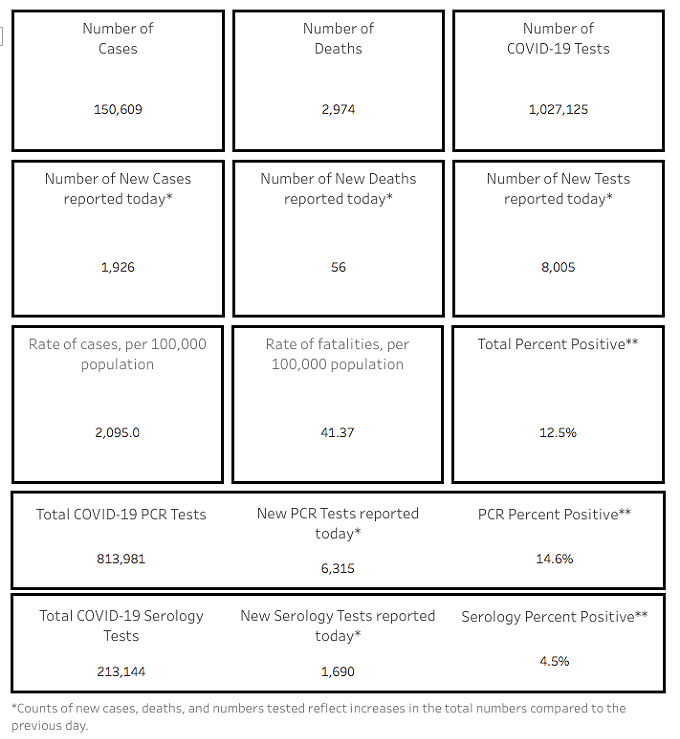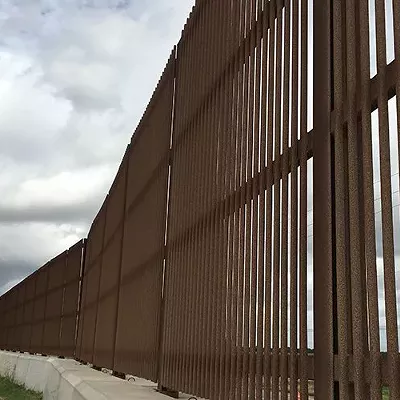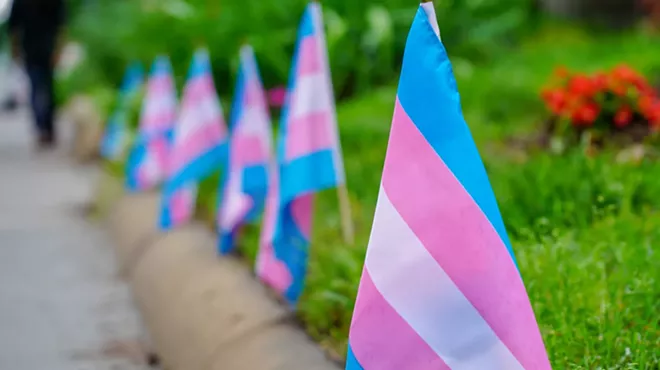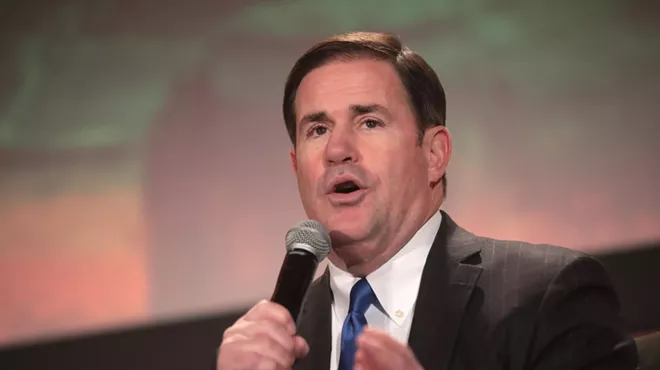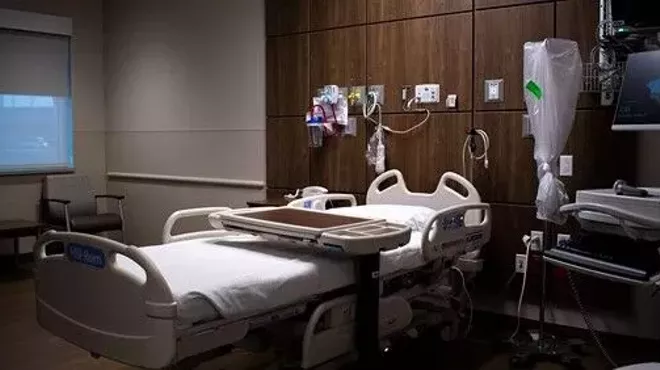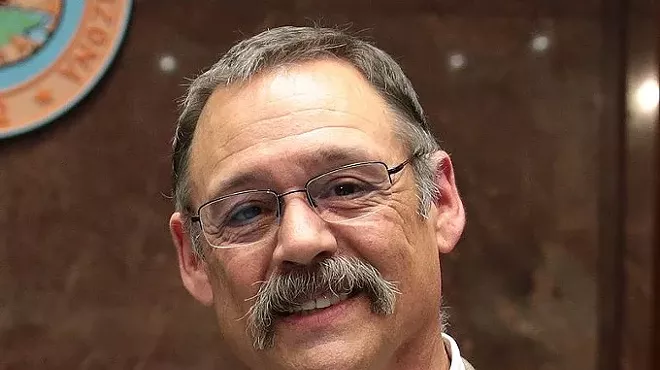Wednesday, July 22, 2020
Your Southern AZ COVID-19 AM Roundup for Wednesday, July 22: Total Cases Top 150K; Schools Awaiting Guidance from Ducey; Ducey Calls on Congress To Extend Unemployment Benefits
In today's coronavirus news: AZ has passed the 150K threshold in cases … hospitalizations are trending downward as Arizonans embrace masks … Gov. Doug Ducey is expected to give more guidance to schools tomorrow as State Superintendent of Public Instruction Kathy Hoffman calls for metrics rather than calendar dates to determine when it is safe to return to schools … Ducey calls on Congress to extend the unemployment benefit that provides an extra $600 a week to out-of-work Arizonans … and more details below.
The total number of confirmed coronavirus cases in Arizona crested the 150,000 mark as of Wednesday, July, 22, afteror the state reported 1,926 new cases this morning, according to the Arizona Department of Health Services.
Pima County had seen 13,900 of the state's 150,609 confirmed cases.
A total of 2,974 people have died after contracting the virus, including 392 in Pima County.
Maricopa County topped the 100,000 threshold today with 100,543 of the state's cases.
Hospitals remain under pressure, although they report in slight decrease in recent days in the number of Arizonans hospitalized with COVID-19-related symptoms. The report shows that 3,094 COVID patients were hospitalized yesterday in the state, down from a peak of 3,517 on July 13 but a slight bump from yesterday's 3,041.
A total of 1,369 people visited ERs yesterday with COVID symptoms, a jump up from Monday's 1,243 but still lower than the the peak of 2,008 on July 7.
A total of 870 COVID-19 patients were in ICU beds yesterday, a slight bump up from yesterday's 865 but still lower than the peak number of 970 on July 13.
Citing a drop in the total number of cases on a week-to-week basis, Gov. Doug Ducey said last week that mask-wearing and steps to reduce the interaction of people in large groups had resulted in some positive signs regarding the spread of the virus.
But Ducey warned the state still had a long road ahead in the fight against COVID-19.
"I want people to get their heads around this," Ducey said. "There's no end in sight today."
Figures from Pima County show that on a week-by-week basis, cases here may have also peaked in the week ending June 27, with new cases reaching 2,300. Pima County Administrator Chuck Huckelberry noted that the two subsequent weeks could still be adjusted upwards, but during the week ending July 4, 2,092 cases were reported. However, Huckelberry noted that the week ending July 4, the county saw a peak of 37 deaths, up from 18 the previous week.
While coronavirus cases may be on a slight downward trend in the state, Ducey urged Arizonans to stay vigilant by staying at home and wearing masks while practicing social distancing when out in public to continue the fight against the virus.
"There will be no victory laps," said Ducey, who praised measures set by local authorities to require masks were helping to reduce spread, but once again stopped short of a statewide mandate.
Arizona Senate Democrats released a joint statement following Ducey's press conference urging him to enact a statewide mask mandate, implement more contact tracing and provide more PPE for hospitals and schools.
"We are disappointed again that the Governor refuses to take stronger actions to curb the spread of the deadly COVID-19 virus," the lawmakers wrote. "More aggressive action is needed now to safely open schools in the future no matter what date is picked. Senate Democrats again urge the Governor to take swift and preventative action. Time is not an ally. Act now, Governor to curtail the spread. Lives, not just livelihoods, are at stake."
As Senate Republicans and the Trump White House attempt to assemble a new federal aid package, Ducey yesterday asked Arizona's congressional delegation to consider a number of provisions to help Arizona in the latest coronavirus package, including an extension of the extra $600 a week in Federal Pandemic Unemployment Compensation that out-of-work Arizonans are receiving. Those additional dollars are set to run out later this month.
"We understand the concerns from businesses that are having difficulty rehiring employees when the government pays more in unemployment benefits compared to what they were paying their former employees before the pandemic," Ducey wrote. "We are advocating that, at a minimum, individuals who continue to be impacted by the COVID-19 pandemic, be eligible to receive at least 100% of their weekly earnings that they were making prior to government intervention in their employers’ ability to stay open. It is by no fault of their own that certain businesses have a higher risk of transmission of COVID-19 and therefore are being required to close by the government, and we would advocate that those individuals continue to have extra support from the FPUC."
Ducey also asked the federal government to provide more money to Arizona's unemployment insurance fund; extend the December deadline for the state's tribes to spend their pandemic aid dollars; more funding for a program that helps low-income Arizonans pay utility bills that climb in the summer thanks to triple-digit temperatures; and special liability protection to shield healthcare workers, businesses and schools from lawsuits related to COVID-19.
The looming question this week: Is it safe to reopen Arizona’s schools and universities next week? Ducey said at last week’s press conference that he was in conversations with school leaders and university presidents about the best way to move forward with the school year. Many school officials are anticipating an announcement this week from Ducey regarding a further delay in starting the school year.
While Arizona schools are tentatively scheduled to open on Aug. 17 (with some districts starting online programs sooner), Ducey said he would be meeting with Arizona Superintendent of Public Instruction Kathy Hoffman and other state educational stakeholders in hopes of providing more complete information on the gameplan for reopening schools.
“I know people want clarity around this and we’re going to provide clarity,” Ducey said. “I’m going to tell you our kids are going to be learning in the fall.”
Hoffman said yesterday that instead of picking a date to reopen schools, Ducey should instead use metrics regarding the spread of the virus.
“School leaders should be empowered to work with local public health officials to examine data and determine when it’s safe to reopen for in-person learning, rather than relying solely on dates,” Hoffman said in a prepared statement. “Metrics, including but not limited to those listed below, will provide communities with clear targets for mitigating COVID-19.”
Those metrics should include a downward trajectory of confirmed new cases, a decrease in positivity rates in testing and widespread availability of tests, Hoffman said.
She added that Ducey should guarantee full funding for distance learning programs, which districts have been assembling in one form or another since March.
“Whether their school buildings are safe to reopen or not, schools need flexibility and budget stability for students and educators to succeed in the upcoming year,” Hoffman said. “Many public schools have already invested considerably in technology, online learning platforms, and other tools needed during distance learning. Students need access to services that support their well-being and academic success across multiple scenarios and conditions during a pandemic.”
Some public health experts say that community transmission is too widespread to safely open the schools as planned. Will Humble, executive director of the Arizona Public Health Association, recently warned that while states that have taken more aggressive steps earlier to slow the spread of the virus will be able to reopen schools, he can’t see the same thing happening in Arizona because of the state of community spread.
Humble, who headed up the Arizona Department of Health Services in the administration of former Gov. Jan Brewer, said there are two main factors to consider when opening schools in the fall: mitigation measures alongside the level of community spread within a school district.
“Because we have the level of community spread that we have, I just don’t see that mitigation measures, which help but don’t eliminate transmission, are going to be adequate to make it a safe environment for teachers and schools and families,” Humble said.
The state needs a much lower percentage of positive tests and much more hospital capacity before schools can safely reopen, Humble said.
Local school districts are planning a mix of "distance learning" online instruction and in-school instruction when school starts next month. Unlike in spring, when schools moved online following spring break, districts are planning stricter instructional time designed to mirror traditional in-person classes.
Tucson Unified School District will launch online classes for all students starting Aug. 10 but in order to avoid losing state funding, schools will open on Aug. 17 for any student who wants to attend class in person. However, students will be in "learning spaces" where they will do the same distance learning program that students who remain home will experience. Teachers may or may not be in the classroom, which may instead include a monitor to keep an eye on the students who are in the room. All TUSD families will receive laptops.
Other local school districts have announced a mix of online and in-person options but say they will be ready to go to online-only if Ducey delays the start of the school year once again.
The total number of confirmed coronavirus cases in Arizona crested the 150,000 mark as of Wednesday, July, 22, afteror the state reported 1,926 new cases this morning, according to the Arizona Department of Health Services.
Pima County had seen 13,900 of the state's 150,609 confirmed cases.
A total of 2,974 people have died after contracting the virus, including 392 in Pima County.
Maricopa County topped the 100,000 threshold today with 100,543 of the state's cases.
Hospitals remain under pressure, although they report in slight decrease in recent days in the number of Arizonans hospitalized with COVID-19-related symptoms. The report shows that 3,094 COVID patients were hospitalized yesterday in the state, down from a peak of 3,517 on July 13 but a slight bump from yesterday's 3,041.
A total of 1,369 people visited ERs yesterday with COVID symptoms, a jump up from Monday's 1,243 but still lower than the the peak of 2,008 on July 7.
A total of 870 COVID-19 patients were in ICU beds yesterday, a slight bump up from yesterday's 865 but still lower than the peak number of 970 on July 13.
Citing a drop in the total number of cases on a week-to-week basis, Gov. Doug Ducey said last week that mask-wearing and steps to reduce the interaction of people in large groups had resulted in some positive signs regarding the spread of the virus.
But Ducey warned the state still had a long road ahead in the fight against COVID-19.
"I want people to get their heads around this," Ducey said. "There's no end in sight today."
Figures from Pima County show that on a week-by-week basis, cases here may have also peaked in the week ending June 27, with new cases reaching 2,300. Pima County Administrator Chuck Huckelberry noted that the two subsequent weeks could still be adjusted upwards, but during the week ending July 4, 2,092 cases were reported. However, Huckelberry noted that the week ending July 4, the county saw a peak of 37 deaths, up from 18 the previous week.
While coronavirus cases may be on a slight downward trend in the state, Ducey urged Arizonans to stay vigilant by staying at home and wearing masks while practicing social distancing when out in public to continue the fight against the virus.
"There will be no victory laps," said Ducey, who praised measures set by local authorities to require masks were helping to reduce spread, but once again stopped short of a statewide mandate.
Arizona Senate Democrats released a joint statement following Ducey's press conference urging him to enact a statewide mask mandate, implement more contact tracing and provide more PPE for hospitals and schools.
"We are disappointed again that the Governor refuses to take stronger actions to curb the spread of the deadly COVID-19 virus," the lawmakers wrote. "More aggressive action is needed now to safely open schools in the future no matter what date is picked. Senate Democrats again urge the Governor to take swift and preventative action. Time is not an ally. Act now, Governor to curtail the spread. Lives, not just livelihoods, are at stake."
As Senate Republicans and the Trump White House attempt to assemble a new federal aid package, Ducey yesterday asked Arizona's congressional delegation to consider a number of provisions to help Arizona in the latest coronavirus package, including an extension of the extra $600 a week in Federal Pandemic Unemployment Compensation that out-of-work Arizonans are receiving. Those additional dollars are set to run out later this month.
"We understand the concerns from businesses that are having difficulty rehiring employees when the government pays more in unemployment benefits compared to what they were paying their former employees before the pandemic," Ducey wrote. "We are advocating that, at a minimum, individuals who continue to be impacted by the COVID-19 pandemic, be eligible to receive at least 100% of their weekly earnings that they were making prior to government intervention in their employers’ ability to stay open. It is by no fault of their own that certain businesses have a higher risk of transmission of COVID-19 and therefore are being required to close by the government, and we would advocate that those individuals continue to have extra support from the FPUC."
Ducey also asked the federal government to provide more money to Arizona's unemployment insurance fund; extend the December deadline for the state's tribes to spend their pandemic aid dollars; more funding for a program that helps low-income Arizonans pay utility bills that climb in the summer thanks to triple-digit temperatures; and special liability protection to shield healthcare workers, businesses and schools from lawsuits related to COVID-19.
The looming question this week: Is it safe to reopen Arizona’s schools and universities next week? Ducey said at last week’s press conference that he was in conversations with school leaders and university presidents about the best way to move forward with the school year. Many school officials are anticipating an announcement this week from Ducey regarding a further delay in starting the school year.
While Arizona schools are tentatively scheduled to open on Aug. 17 (with some districts starting online programs sooner), Ducey said he would be meeting with Arizona Superintendent of Public Instruction Kathy Hoffman and other state educational stakeholders in hopes of providing more complete information on the gameplan for reopening schools.
“I know people want clarity around this and we’re going to provide clarity,” Ducey said. “I’m going to tell you our kids are going to be learning in the fall.”
Hoffman said yesterday that instead of picking a date to reopen schools, Ducey should instead use metrics regarding the spread of the virus.
“School leaders should be empowered to work with local public health officials to examine data and determine when it’s safe to reopen for in-person learning, rather than relying solely on dates,” Hoffman said in a prepared statement. “Metrics, including but not limited to those listed below, will provide communities with clear targets for mitigating COVID-19.”
Those metrics should include a downward trajectory of confirmed new cases, a decrease in positivity rates in testing and widespread availability of tests, Hoffman said.
She added that Ducey should guarantee full funding for distance learning programs, which districts have been assembling in one form or another since March.
“Whether their school buildings are safe to reopen or not, schools need flexibility and budget stability for students and educators to succeed in the upcoming year,” Hoffman said. “Many public schools have already invested considerably in technology, online learning platforms, and other tools needed during distance learning. Students need access to services that support their well-being and academic success across multiple scenarios and conditions during a pandemic.”
Some public health experts say that community transmission is too widespread to safely open the schools as planned. Will Humble, executive director of the Arizona Public Health Association, recently warned that while states that have taken more aggressive steps earlier to slow the spread of the virus will be able to reopen schools, he can’t see the same thing happening in Arizona because of the state of community spread.
Humble, who headed up the Arizona Department of Health Services in the administration of former Gov. Jan Brewer, said there are two main factors to consider when opening schools in the fall: mitigation measures alongside the level of community spread within a school district.
“Because we have the level of community spread that we have, I just don’t see that mitigation measures, which help but don’t eliminate transmission, are going to be adequate to make it a safe environment for teachers and schools and families,” Humble said.
The state needs a much lower percentage of positive tests and much more hospital capacity before schools can safely reopen, Humble said.
Local school districts are planning a mix of "distance learning" online instruction and in-school instruction when school starts next month. Unlike in spring, when schools moved online following spring break, districts are planning stricter instructional time designed to mirror traditional in-person classes.
Tucson Unified School District will launch online classes for all students starting Aug. 10 but in order to avoid losing state funding, schools will open on Aug. 17 for any student who wants to attend class in person. However, students will be in "learning spaces" where they will do the same distance learning program that students who remain home will experience. Teachers may or may not be in the classroom, which may instead include a monitor to keep an eye on the students who are in the room. All TUSD families will receive laptops.
Other local school districts have announced a mix of online and in-person options but say they will be ready to go to online-only if Ducey delays the start of the school year once again.


